The Zugel ZIHF61B induction electric cooker is a compact and, according to its specifications, powerful appliance. The single-burner model is designed for use with cookware with a bottom diameter of 12 to 20 cm. It offers ten power levels and the ability to adjust the cooking temperature in the range from 60 to 240 °C.
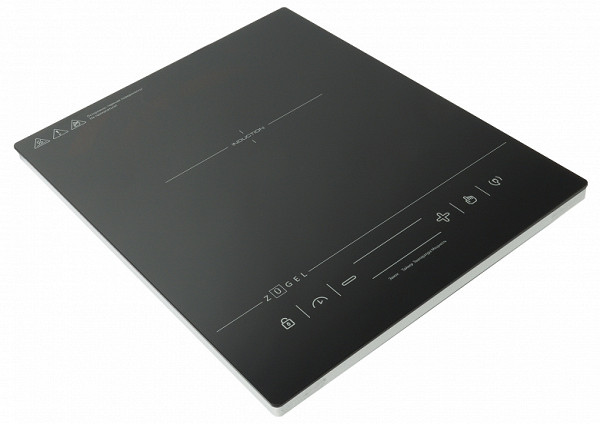
Small, powerful, light and smart – what else could you want from a portable stove? So during the testing we will focus on assessing the declared technical properties and ease of use.
Characteristics
| Manufacturer | Zugel |
|---|---|
| Model | ZIHF61B |
| Type | tabletop induction cooker |
| Country of origin | China |
| Guarantee | 12 months |
| Service life* | 5 years |
| Power | 200-2000 W |
| Power control levels | 10 levels: from 200W to 2000W in 200W increments |
| Temperature control levels | 10 levels: from 60 to 240 °C in 20 °C increments |
| Control type | electronic, touch panel, LED display |
| Timer | up to 180 minutes |
| Work surface material | glass ceramics |
| Bottom diameter of the cookware | 12-20 cm |
| Maximum load per burner | 8 kg |
| Additional functions | residual heat indication, panel lock (child protection), overflow protection, overheating and voltage surge protection, automatic power-off |
| Weight | 2.25 kg |
| Dimensions (W×H×D) | 29.5×6.5×37 cm |
| Length of network cable | 1.35 m |
* Contrary to popular belief, this is not a period after which the device will necessarily break down. However, after this period, the manufacturer ceases to bear any responsibility for its functionality and has the right to refuse to repair it, even for a fee.
Equipment
The stove is packed in a compact box made of durable cardboard with a glossy surface. The packaging design is made in dark monochrome shades, against which bright accents look especially expressive. Graphic and text information on the packaging gives a complete picture of the device and its functions. In addition, the box is equipped with a handle for easy transportation, which will facilitate delivery to the buyer's home.
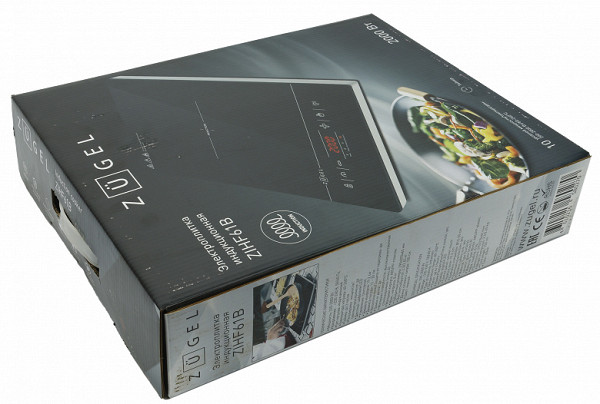
The device is protected from damage by polyethylene film and two foam inserts that securely fix the body inside the package. The following were removed from the box: the electric stove itself and the operating manual with a warranty card.
At first glance
The Zugel ZIHF61B single-burner electric stove features a neat and neutral design that resembles the design of full-size models. The weight of the device is 2.25 kg, which makes it quite light, although not completely weightless. The user can easily transport the stove to the dacha or any other place with a reliable electrical network where you need to cook food.
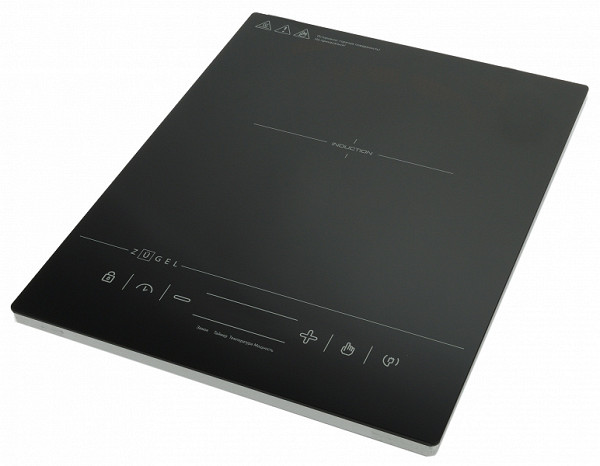
The working area of the black glass ceramics is made at a high level — the edge is smooth, without sharp corners and nicks. In the center there is a mark for installing the cookware, and in the upper left corner there are pictograms warning about the possibility of getting burned. The control panel, located closer to the user, includes several touch buttons and a display.
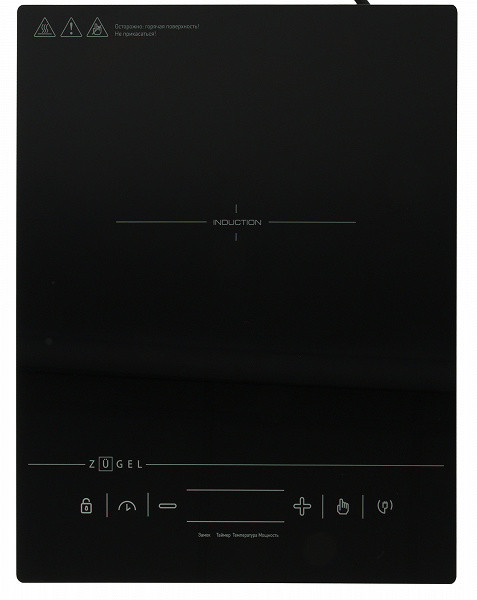
The height of the tile is 6.5 cm. The side walls of the case are made of black matte plastic. A silver insert 1 cm wide visually separates the upper working area and the side part of the case. The legs raise the tile by 1.5 cm above the table surface.

The power cable plugs into the back of the unit. The cord is 1.35 m long, which is slightly longer than most compact electric cookers. This area also contains a ventilation grill that provides airflow to the internal heating elements.
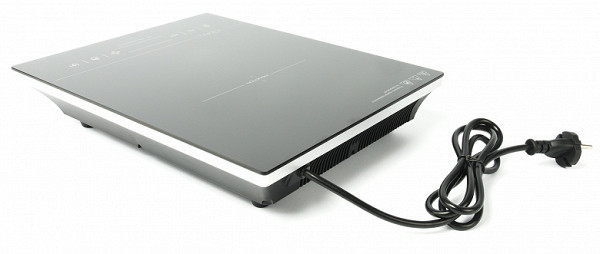
Let's take a closer look at the bottom of the Zugel ZIHF61B. In the center is a sticker with brief technical characteristics of the device, next to it are ventilation grilles. Four legs with rubberized inserts ensure stability of the device and prevent it from sliding on smooth surfaces.
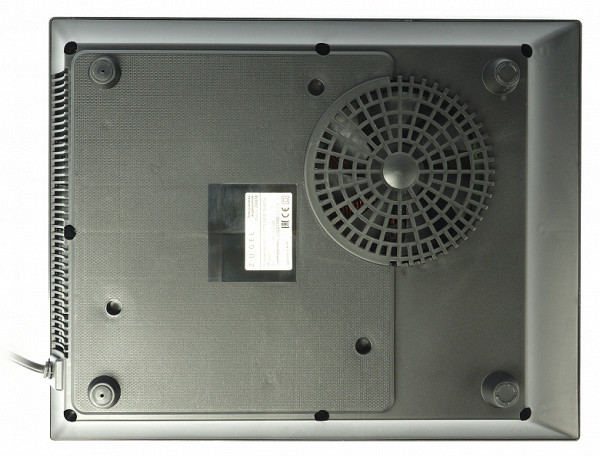
The design's appearance remains simple and functional, which corresponds to the utilitarian purpose of the device. There are no complaints about the quality of assembly and processing of the parts of the Zugel ZIHF61B induction electric cooker.
Instructions
The user manual is a 26-page A5 brochure printed on standard paper. It covers all important aspects of using the appliance, from safety precautions to disposal. The brochure also includes a section on choosing the right cookware for your induction hob.
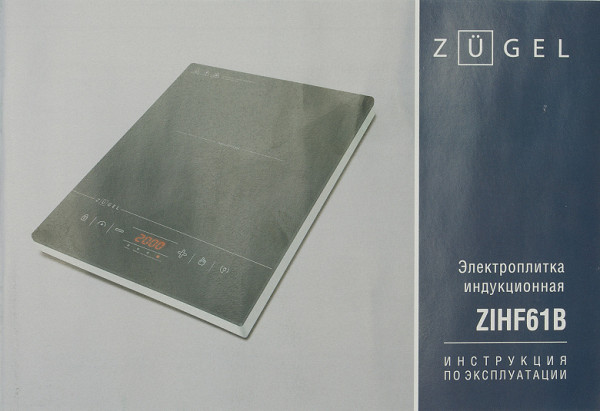
The information is presented in a simple and understandable language, logically divided into chapters. Lists, tables, diagrams and pictures help to perceive and find the necessary information more easily.
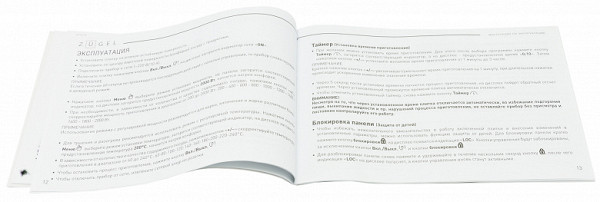
The sections «Operation» and «Practical recommendations for cooking» will certainly prove useful. They describe the control features, additional functions and capabilities of the device, as well as temperature modes and tips for cooking various dishes.
Control
The Zugel ZIHF61B induction cooker is intuitive to operate. The control panel is located in a standard place and is visually separated from the work surface by a thin horizontal line. It consists of a row of touch buttons separated by an LED display located in the middle. When you press the buttons, the device makes a quiet short sound.

Let's look at the functions of each control panel button from left to right:
- Lock — panel lock. A short press activates the button lock, a long press deactivates it.
- Digital timer — sets the cooking time from 1 minute to 3 hours in 1-minute increments. A long press on the "-" and "+" buttons quickly changes the time value.
- Buttons "-" and "+" — adjust the heating power, respectively, to a lower and higher side.
- Palm — menu button that switches operating modes from power in watts to temperature in degrees Celsius.
- Plug with cord — network on/off button.
The device has several protective functions:
- Overheating protection (it failed to work).
- Overflow protection (if liquid gets on the glass-ceramic surface, the hob should automatically turn off).
- Automatic switch-off (if unsuitable cookware is used, or there is none, or the hob has been on for two hours without any action on the control panel).
- Residual heat indicator (the «H» indicator lights up on the display if the surface is hot).
Control of the Zugel ZIHF61B induction hob is really simple, thanks to the well-thought-out design of the panel, which provides a clear understanding of the purpose of the buttons and allows you to easily adjust the necessary parameters and functions.
Operation
The instructions recommend installing the induction hob on a flat, hard and dry surface, leaving at least 10 cm of space from walls and other objects to ensure uniform circulation of cooling air. After we wiped the glass ceramic surface with a soft cloth, we installed the hob under the hood.
For cooking, you need special cookware that is suitable for induction hobs. To check whether the cookware is suitable, just use a magnet: if it sticks to the bottom, the pot or frying pan can be safely used on such a hob.
During our testing, the hob worked predictably, without surprises. The heating was powerful enough to properly fry a large amount of fresh vegetables and weak enough to slowly simmer the broth. We rate the uniformity of heating as “excellent”, and more details will be presented in the testing section.
We were pleasantly surprised at how well this “little one” copes. For example, it did a great job of frying wet food in a 28 cm pan with a 22 cm bottom diameter, which is larger than the recommended cookware size. The pancakes turned out great in a 28 cm pancake pan (the bottom diameter is also 22 cm).
The minimum recommended bottom diameter is 12 cm. During our tests, we used a small saucepan with a 15 cm bottom and did not notice any problems with heating.
The maximum load on the burner is 8 kg. We cooked a large broth in a 6.5 kg saucepan. To be honest, it was a little scary to place such a heavy saucepan on the compact Zugel ZIHF61B, but in the end nothing unpleasant happened — the weight of the saucepan did not cause any noticeable discomfort to the hob.
Care
It is recommended to clean the glass ceramic surface after each use, and this procedure is quite simple and safe if you follow a few rules:
- Start cleaning only after the surface has cooled down.
- Use a soft cloth and neutral cleaning agents. Avoid aggressive solvents such as gasoline, alcohol and amyl acetate.
- Complex, dried-on dirt can be removed with a special scraper, but it is better to remove residues from boiled milk and sweet dishes from a still warm surface to prevent them from sticking and drying.
- Thoroughly remove residues of cleaning agents and wipe the surface dry.
Also, do not use household steam cleaners, immerse the tiles in water or wash them under running water.
There were no difficulties with cleaning the Zugel ZIHF61B. After cooking, we simply wiped the surface with a soft dry towel. If there were greasy splashes or drops on the tiles, first clean the glass ceramics with a sponge and a small amount of dishwashing detergent, then wipe with a clean damp cloth and finally wipe dry with a soft towel. Everything is simple and convenient.
Our measurements
Boiling a liter of water with an initial temperature of 20 °C
At maximum power (2000 W) with the lid closed, a liter of water with an initial temperature of 20 °C was heated in a saucepan with a bottom diameter of 17 cm. The first bubbles began to rise to the surface after 3 minutes 30 seconds, and vigorous boiling began after 3 minutes 50 seconds from the start of heating. Bubbles formed over the entire area of the bottom, which confirms the uniformity of heating, as subsequent tests showed.
The stove required 0.121 kW h to boil 1 liter of water.
Operating power in different modes
In high power modes, the hob operates with continuous heating. Starting from 800 W, the heating becomes pulsed with a 10-second cycle. For clarity, the measurements are summarized in a single table:
| Declared power, W | Power consumption, W | Cycle (off-on), s | Average power, W |
|---|---|---|---|
| 200 | 390 | 7-3 | 135 |
| 400 | 1050 | 6-4 | 420 |
| 600 | 1080 | 4-6 | 648 |
| 800 | 1080 | 2-8 | 864 |
| 1000 | 1070 | — | — |
| 1200 | 1175 | — | — |
| 1400 | 1380 | — | — |
| 1600 | 1580 | — | — |
| 1800 | 1780 | — | — |
| 2000 | 1900 | — | — |
In standby mode, the wattmeter does not record power consumption. In ventilation mode without heating, the stove consumes from 4.0 to 4.3 W.
Automatic shutdown is triggered two hours after the last user action.
During 4 hours 32 minutes of cooking broth (first rapid heating at 2000 W, then simmering at 200-400 W), the device consumed 1.594 kW h. Then we prepared the dressing for borscht, frying and stewing vegetables, and then cooked the borscht itself. In total, the stove worked for 5 hours 51 minutes in various modes and consumed 2.660 kW h.
During one hour of operation in frying mode at 1200-800 W, 0.838 kW h were consumed.
We estimate the noise level during operation as average. Its volume can be compared to the sound of a hood at medium speed. The fan turns on from the very beginning and continues to work for some time after the heating is turned off.
Practice tests
Aspic
We decided to make a broth from beef bones and a small pork shank. We used the largest pot, filled it with water and put it on the scales. The weight of the pot with the contents was 6.5 kg.
Cooking began at maximum power. After just 16 minutes, the water temperature in the pot reached 75 °C, despite the fact that the products were frozen. We were pleasantly surprised by the power of the stove with the unusual name Zugel.
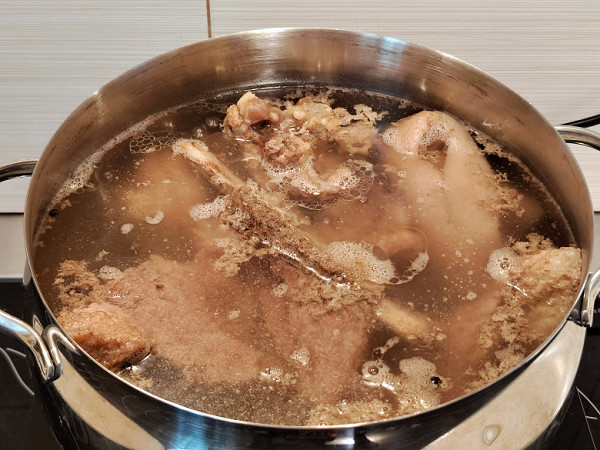
We reduced the power to 400 W and watched the process for a while. When we saw a moderate gurgling, we reduced the heat to the minimum (200 W) and left the broth for 4 hours. However, after two hours, a quiet signal was heard and the stove turned off. We simply turned it back on, restored the settings and continued with our business.
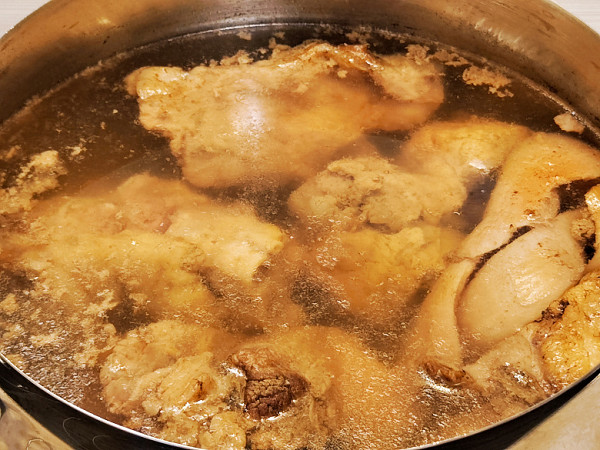
The minimum power turned out to be ideal for boiling the broth. The water bubbled gently, forming small bubbles. As a result, the broth turned out rich, transparent and clear.
We strained it, separated and cut the meat, then poured the broth over it and left it to cool.
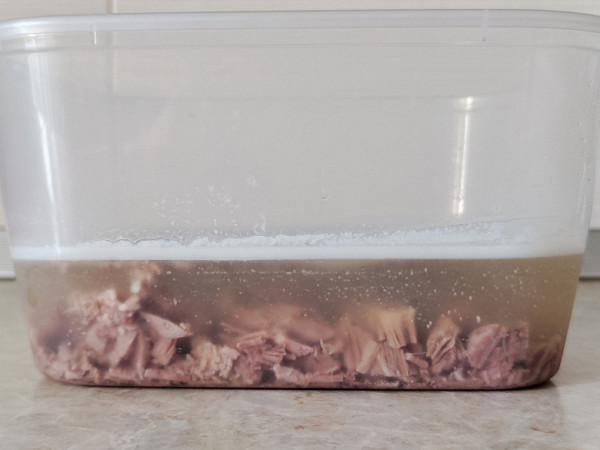
Result: excellent.
Borsch
We decided to make borscht from the leftover broth.
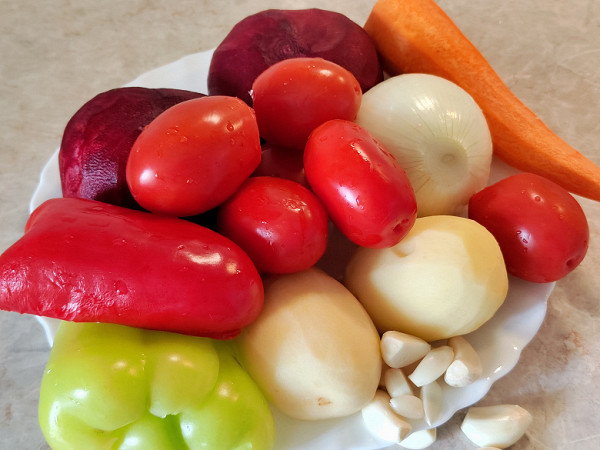
When preparing the dressing, we decided to check how the hob would cope with frying vegetables in a frying pan larger than the recommended dimensions. We used a frying pan with a diameter of 28 cm, in which the bottom in contact with the heating surface is 22 cm. We started by frying onions.
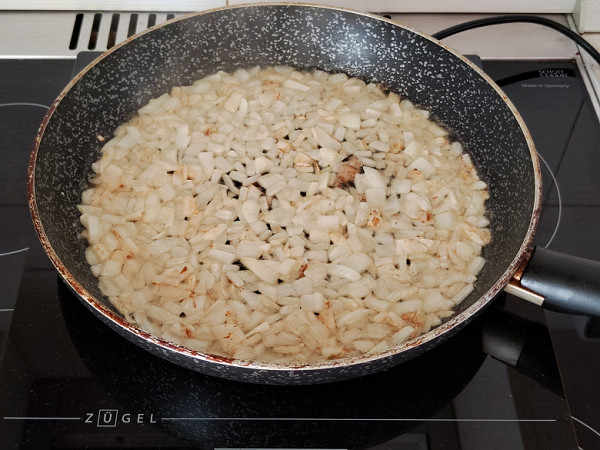
We were pleasantly surprised when a large juicy onion was quickly and easily fried in a short time. Then we decided to add two juicy bell peppers, thinking that their juice would definitely slow down the frying process.
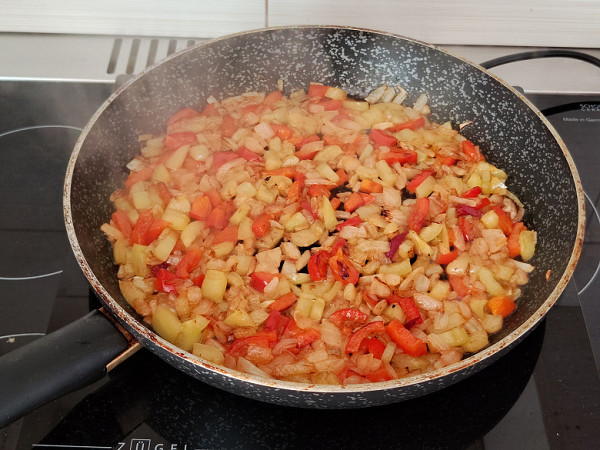
No, the pepper didn't slow down the process. It browned just as quickly. We added finely chopped beets and reduced the heat to 800 W. When the beets became soft, we poured in the carrots. Despite the juiciness of the vegetables, the dressing did not turn into a sauté — the products were perfectly stewed, not boiled. After that, we added the blended tomatoes and stewed for a few more minutes.
Then we removed the frying pan with the dressing and put in a saucepan with broth to boil the potatoes. As soon as the potatoes were ready, we added the dressing, adjusted the borscht for salt and acidity, added spices, crushed garlic and left to simmer for another five minutes.
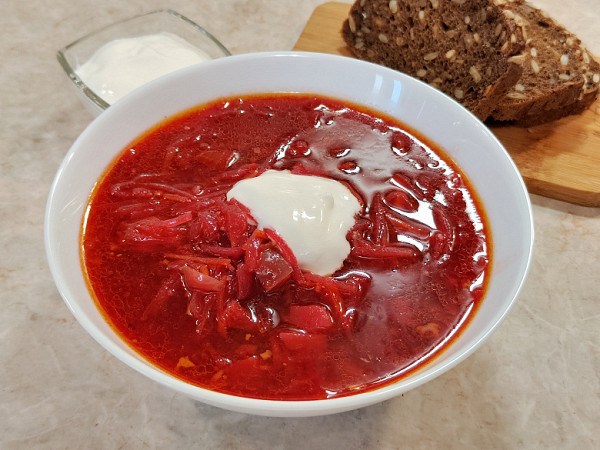
The cooker did a great job of both slow cooking and quickly frying juicy vegetables in a huge frying pan.
Result: excellent.
Zucchini fritters
These vegetable pancakes are good because we want to get not just a fried dish, but a well-roasted one. So we added a couple of potatoes to the zucchini — potatoes can burn quickly, but they cook slowly. We grated the vegetables, beat in an egg, added salt, dried garlic, a spice mix and a few spoons of flour, then mixed thoroughly.
We fried in the same frying pan that was already mentioned. Its edges are level with the borders of the hob body, and in the photo it is even difficult to see where the hob begins, since the frying pan completely covers it.
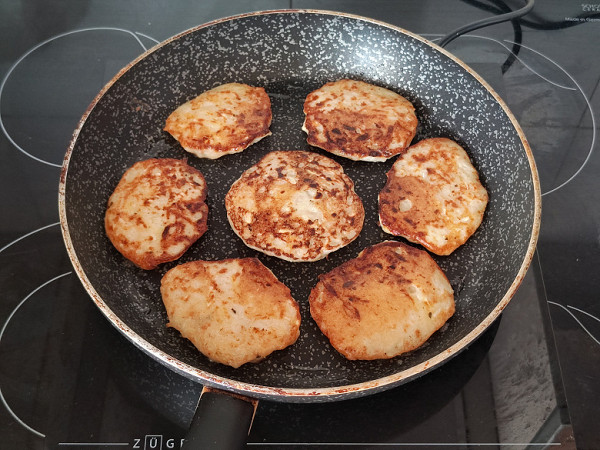
We started frying at 1200 W, but then the pancakes turned out to be fried, but raw inside. We reduced the heat to 800 W — it turned out to be ideal for making zucchini-potato pancakes.
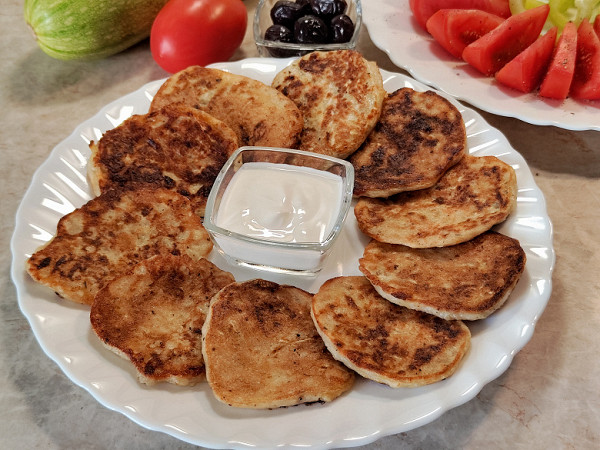
We rate the uniformity of frying across the bottom area as excellent, considering that we used a pan that exceeded the recommended size.
Result: excellent.
Pancakes
To make sure that the heating was uniform across the entire surface of the burner, we decided to bake some pancakes. And again, we didn't have a frying pan that met the instructions.
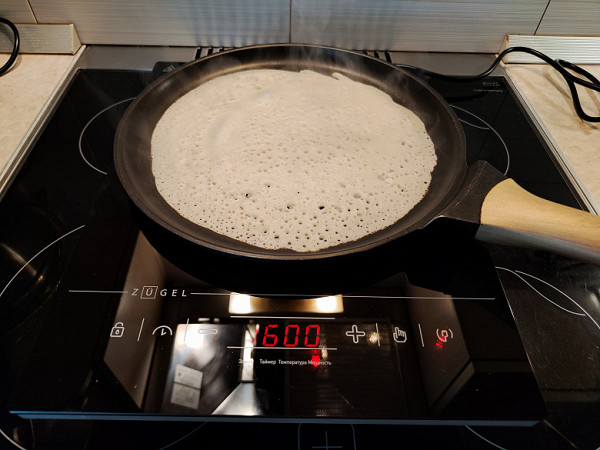
The pancakes were cooked perfectly at 1600 W, but this is due to the fact that the author often bakes pancakes and is already used to doing it quickly. A less experienced person should reduce the heat in order to have time to pour new dough, remove ready pancakes, grease them with oil and drive away family members and cats from the table. Usually the author uses two frying pans to speed up the process, and even has time to brew tea and set the table. However, with the Zugel ZIHF61B stove, it was impossible to be distracted from cooking.
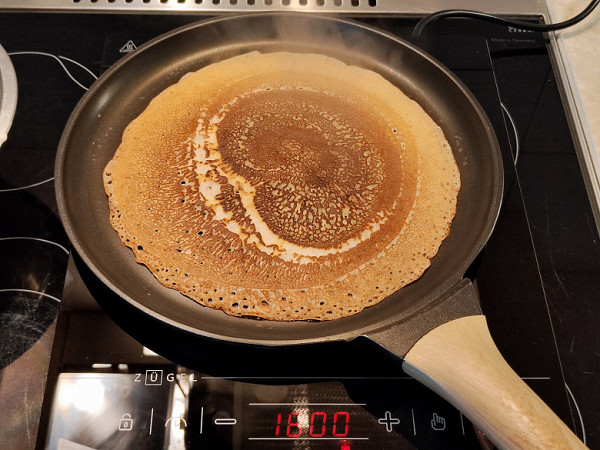
The photo shows how quickly the central part of the pancake, where the dough was poured, «set». At the same time, the uniformity of heating of the entire bottom area was at the highest level. As a result, a whole stack of pancakes was cooked very quickly and easily.
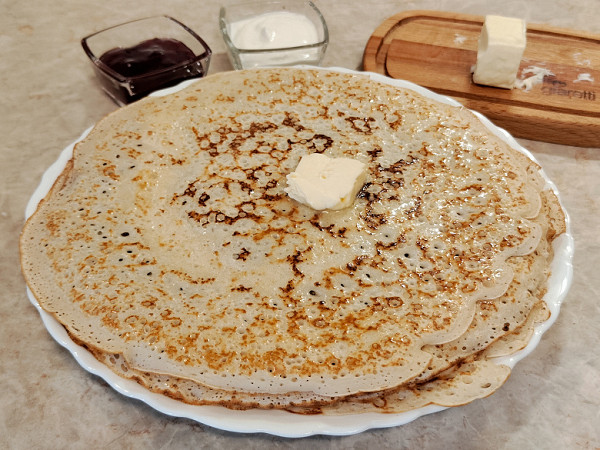
Result: excellent.
Conclusions
The Zugel ZIHF61B induction electric stove made an exceptionally positive impression on us. It surprised the author with its compactness and ease of transportation, as well as simple and intuitive controls. The ability to adjust the temperature, the presence of a timer and an auto-off function make the stove very convenient to use. Caring for it is also not difficult: it is enough to prevent food residues from drying out.
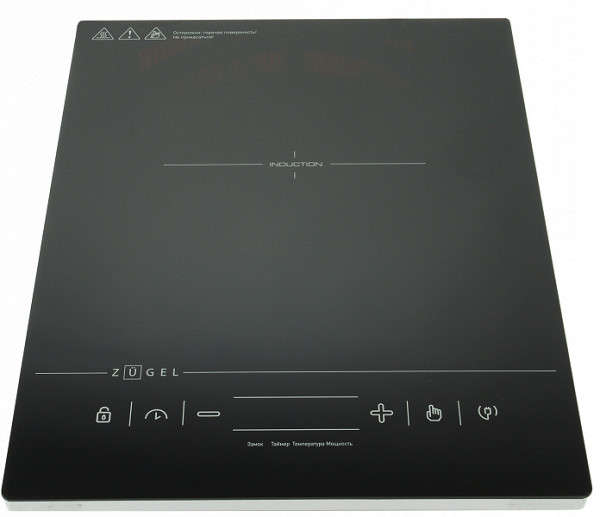
The burner provides uniform heating for both a small saucepan and a frying pan with a large bottom diameter exceeding the recommended dimensions. High power allows you to quickly and efficiently fry juicy products, and the minimum heating level is suitable for slow simmering and cooking dietary dishes. The timer with heating shutdown is also a useful function, especially in combination with child protection.
Among the disadvantages, we can note the noisy operation, typical of all compact induction cookers. Also, we were unable to test the overflow protection function.
Pros:
- compact size, which allows, however, to use large-volume dishes
- intuitive touch control
- 10 power and temperature levels
- timer up to 180 minutes, turning off heating
- additional protective functions
Cons:
- noisy fan
- overflow protection does not work
